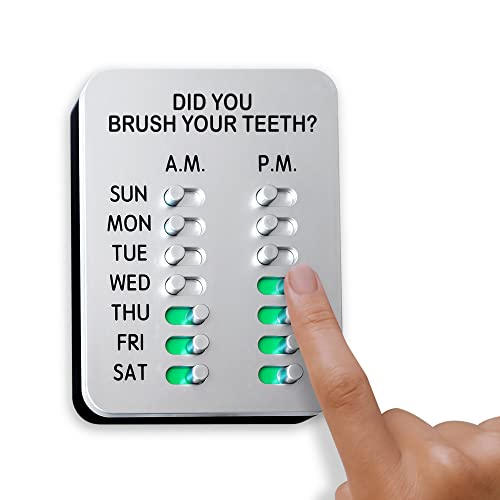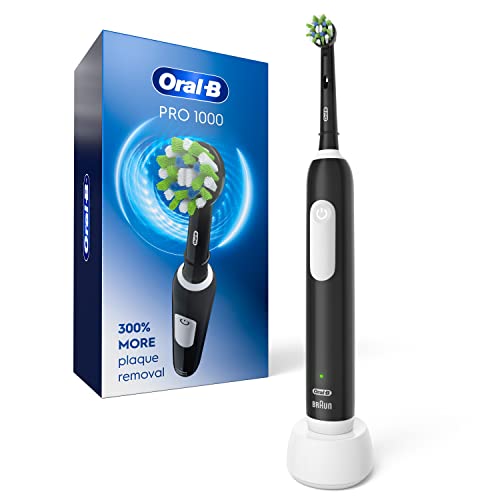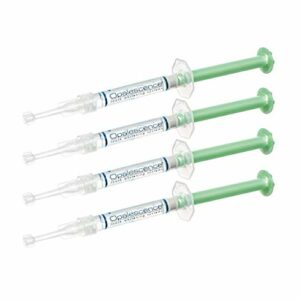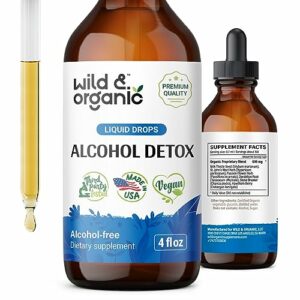We understand that life can get busy and it’s easy to let certain habits slip. But when it comes to taking care of our teeth, consistency is key. That’s why we want to talk to you about the importance of brushing your teeth twice a day. We know that it can be challenging to find the time and motivation, but we’re here to remind you why it’s crucial to maintain good oral hygiene. So let’s dive in and explore the benefits of this simple yet vital daily routine.
Keeping Your Smile Bright and Healthy
Benefits of Brushing Twice a Day
Maintaining good oral hygiene is crucial for keeping your teeth and gums healthy. Among all the oral care practices, brushing your teeth twice a day is one of the most important habits to develop. Not only does it help maintain a bright smile, but it also plays a vital role in preventing dental problems. In this blog section, we will delve into the various benefits of brushing twice a day and why it should be an integral part of your daily routine.
Removes Plaque
Plaque, a sticky film of bacteria, forms on your teeth throughout the day. If not removed, it can lead to tooth decay and gum disease. Brushing your teeth twice a day helps remove this plaque, preventing it from hardening into tartar. By effectively removing plaque, you can significantly reduce the risk of dental problems.
Prevents Tooth Decay
Tooth decay, also known as cavities or dental caries, is a common dental problem caused by the breakdown of tooth enamel. Regular brushing twice a day with fluoride toothpaste helps remove food particles and bacteria that can lead to the formation of acids. These acids attack the tooth enamel, eventually causing tooth decay. By brushing regularly, you can minimize the chances of developing cavities and maintain a healthier smile.
Reduces the Risk of Gum Disease
Gum disease, also called periodontal disease, is an infection of the gum tissues that support your teeth. It is primarily caused by the buildup of plaque and tartar along the gumline. By brushing twice a day, you can effectively remove the plaque, reducing the risk of gum disease. Proper brushing techniques also help stimulate the gums and improve blood circulation, promoting overall gum health.
Keeps Your Breath Fresh
Nobody wants to have bad breath, and brushing twice a day can help you maintain fresh breath throughout the day. Proper brushing removes bacteria and food particles that can cause unpleasant odors in your mouth. It also helps combat dry mouth, which is a common cause of bad breath. By incorporating regular brushing into your routine, you can confidently communicate and interact with others without worrying about halitosis.
Comparison Table: Benefits of Brushing Twice a Day
| Benefits | Explanation |
|---|---|
| Removes Plaque | Brushing twice a day helps remove the sticky film of bacteria, known as plaque. |
| Prevents Tooth Decay | Regular brushing removes food particles and bacteria, reducing the risk of cavities. |
| Reduces the Risk of Gum Disease | Effective plaque removal decreases the chances of gum disease development. |
| Keeps Your Breath Fresh | Brushing eliminates bacteria and food particles that cause bad breath. |
Remember, brushing twice a day is just one part of a comprehensive oral care routine. It is essential to complement it with flossing, using mouthwash, eating a balanced diet, and regular dental check-ups. By following these practices, you can maintain optimal oral health and enjoy a beautiful smile for years to come.
Proper Brushing Technique
Taking care of your oral health involves more than just brushing your teeth regularly. It’s essential to ensure that you are using the proper brushing technique to effectively remove plaque and maintain healthy gums. In this blog post, we will provide you with step-by-step instructions on the correct brushing technique, from choosing the right toothbrush to using the correct brushing motion. By following these tips, you can achieve a thorough clean and keep your teeth and gums in optimal condition.
Step 1: Choosing the Right Toothbrush
The first step to achieving a proper brushing technique is selecting the right toothbrush. Consider the following factors when choosing a toothbrush:
- Bristle type: Opt for a toothbrush with soft bristles to avoid irritation and damage to your gums.
- Size and shape: Choose a toothbrush head that comfortably fits in your mouth, allowing you to reach all areas easily.
- Electric or manual: Both electric and manual toothbrushes can be effective, so choose the one that you feel most comfortable using.
Step 2: Preparing Your Toothbrush
Before you begin brushing, make sure your toothbrush is prepared correctly:
- Toothpaste: Apply a pea-sized amount of fluoride toothpaste to your toothbrush. Fluoride helps strengthen your tooth enamel and prevent cavities.
- Wet your toothbrush: Wet the bristles of your toothbrush with water to help distribute the toothpaste evenly.
Step 3: Proper Brushing Technique
Now that your toothbrush is ready, let’s dive into the proper brushing technique:
- Position your toothbrush: Hold your toothbrush at a 45-degree angle towards your gumline.
- Start with gentle circular motions: Using light pressure, move your toothbrush in small circles covering all tooth surfaces. Pay extra attention to the gumline, where plaque often accumulates.
- Clean each tooth individually: Spend a few seconds on each tooth, ensuring that you brush the outer, inner, and chewing surfaces.
- Brush your tongue: Don’t forget to brush your tongue to remove bacteria and freshen your breath.
Additional Tips:
- Brushing time: Brush your teeth for a minimum of two minutes, twice a day.
- Replace your toothbrush: Replace your toothbrush every three to four months or when the bristles start fraying.
- Flossing and mouthwash: Remember to complement your brushing routine with daily flossing and mouthwash for a comprehensive oral care routine.
Comparing Manual and Electric Toothbrushes
Here’s a quick comparison to help you choose between a manual or electric toothbrush:
| Manual Toothbrush | Electric Toothbrush |
|---|---|
| Affordable | Convenient |
| Requires manual dexterity | May have additional features like timers or pressure sensors |
| Effective if used correctly | May provide a more consistent brushing motion |
Remember, regardless of the type of toothbrush you choose, the key lies in using the proper brushing technique.
By following these step-by-step instructions and incorporating them into your daily oral care routine, you can ensure a thorough clean for your teeth and gums. Remember, maintaining good oral hygiene is essential for your overall health, so start implementing these tips today for a healthier smile!
Choosing the Right Toothpaste and Brush
Taking care of your teeth is an essential part of maintaining good oral hygiene. However, with so many toothpaste and toothbrush options available on the market, it can be overwhelming to know which ones are best for you. In this guide, we will help you navigate through the various options and explain how to choose the most suitable toothpaste and brush based on your specific dental needs and preferences.
Understanding Your Dental Needs
Before diving into the world of toothpaste and toothbrushes, it’s important to understand your dental needs. Are you prone to cavities? Do you have sensitive teeth? Are you looking to whiten your teeth? By identifying your specific dental concerns, you can choose products that address those needs effectively.
Toothpaste Options
There are several types of toothpaste available, each catering to different dental needs. Here are some common options and their benefits:
Fluoride Toothpaste
- Contains fluoride, a mineral that helps prevent tooth decay.
- Strengthens tooth enamel and makes it more resistant to acid attacks.
- Ideal for those who are prone to cavities or want to prevent them.
Desensitizing Toothpaste
- Formulated for individuals with sensitive teeth.
- Helps reduce tooth sensitivity by blocking nerve signals.
- Contains ingredients like potassium nitrate or strontium chloride.
Whitening Toothpaste
- Designed to remove surface stains and brighten teeth.
- Contains mild abrasives or chemical agents that help remove stains.
- Results may vary depending on the severity of stains.
Tartar Control Toothpaste
- Formulated to prevent the buildup of tartar (hardened plaque).
- Contains ingredients that inhibit tartar formation.
- Ideal for individuals prone to tartar buildup or who have gum disease.
Natural Toothpaste
- Made from natural ingredients, avoiding harsh chemicals.
- May contain herbal extracts or essential oils for added benefits.
- Suitable for those seeking a more natural oral care option.
Toothbrush Options
Just like toothpaste, toothbrushes come in various shapes, sizes, and bristle types. Here are some options to consider when choosing a toothbrush:
Manual Toothbrush
- Traditional toothbrush with a handle and bristles.
- Available in different bristle textures, such as soft, medium, or hard.
- Suitable for most individuals and offers a wide range of options.
Electric Toothbrush
- Powered by electricity, providing automated brush movements.
- Can be sonic or oscillating, depending on the technology used.
- May offer additional features like timers or pressure sensors.
Choosing the Right Combination
To maximize your oral care routine, it’s important to choose the right combination of toothpaste and brush. Here are a few tips to help you make the best decision:
- Consider your dental needs: Identify your specific concerns and choose toothpaste and a toothbrush that address those needs effectively.
- Seek professional advice: Consult with your dentist or dental hygienist for personalized recommendations based on your oral health.
- Experiment and adapt: It may take some trial and error to find the perfect toothpaste and brush combination that suits you best. Don’t be afraid to try different options until you find what works for you.
Remember, maintaining good oral hygiene goes beyond just brushing your teeth. Regular dental check-ups, flossing, and a balanced diet are also essential for optimal oral health.
Now armed with the knowledge of how to choose the right toothpaste and brush, you can take a step towards a healthier smile. Happy brushing!
Overcoming Challenges and Building a Habit
Brushing teeth twice a day is essential for maintaining good oral hygiene. However, there are times when this seemingly simple task can become challenging due to various reasons. In this blog section, we will discuss some common obstacles that people face and provide practical tips for overcoming them.
Lack of Time
One of the most common challenges people face when it comes to brushing their teeth twice a day is a lack of time. With busy schedules and multiple responsibilities, it can be difficult to find a few minutes to dedicate to oral care. However, with some planning and prioritization, this challenge can be overcome. Here are a few tips:
- Time management: Evaluate your daily routine and identify pockets of time that can be utilized for brushing. It could be during your morning or evening commute, while watching TV, or before going to bed.
- Set reminders: Use alarms or smartphone apps to remind yourself to brush your teeth at specific times. This can help you establish a routine and make brushing a habit.
- Multitask: Consider multitasking while brushing your teeth. For example, you can use that time to catch up on reading, listen to a podcast, or do some light stretching.
Lack of Motivation
Another obstacle that many people face is a lack of motivation to brush their teeth twice a day. Sometimes, the repetitive nature of the task can make it feel mundane and unexciting. To overcome this challenge, try these strategies:
- Educate yourself: Learn about the importance of oral hygiene and the benefits of brushing twice a day. Understanding the long-term consequences of neglecting oral health can provide the motivation you need to stay consistent.
- Reward yourself: Create a reward system for yourself. For example, treat yourself to a small indulgence after successfully completing a week of consistent brushing. This can help you stay motivated and make the habit more enjoyable.
- Find a brushing buddy: Partner up with a family member or friend who shares similar oral care goals. By holding each other accountable, you can stay motivated and make the habit of brushing twice a day more enjoyable.
Building a Consistent Brushing Habit
Now that we have discussed some of the challenges people face, let’s explore strategies for building a consistent brushing habit. Consistency is key to ensuring long-term oral health benefits. Here are a few tips to help you establish a regular brushing routine:
- Make it a priority: Prioritize oral care and view it as an essential part of your daily routine.
- Start small: If twice a day seems overwhelming, start by committing to brushing once a day and gradually increase the frequency.
- Keep your tools accessible: Place your toothbrush, toothpaste, and floss in a visible and easily accessible location. This will serve as a visual reminder and make it more convenient to brush.
- Track your progress: Maintain a log or use a toothbrush tracking app to keep track of your brushing habits. This can help you stay accountable and track your progress over time.
Remember, building a habit takes time and effort. Be patient with yourself and celebrate small victories along the way. With consistency and perseverance, you can overcome any challenges and establish a regular brushing habit that will benefit your oral health in the long run.
Disclaimer: This blog section provides general information and tips. For specific dental advice, consult with a dental professional.
Taking care of your oral health is essential
In conclusion, we strongly believe that brushing our teeth twice a day is crucial for maintaining excellent oral health. It is undeniable that this simple habit provides a multitude of benefits, such as removing plaque, preventing cavities, and ensuring fresh breath. By diligently following the correct brushing technique, using suitable toothpaste and brushes, and overcoming any challenges, we can establish a healthy routine. Let us prioritize brushing our teeth twice a day and reap the long-term rewards of a beautiful and healthy smile.





















